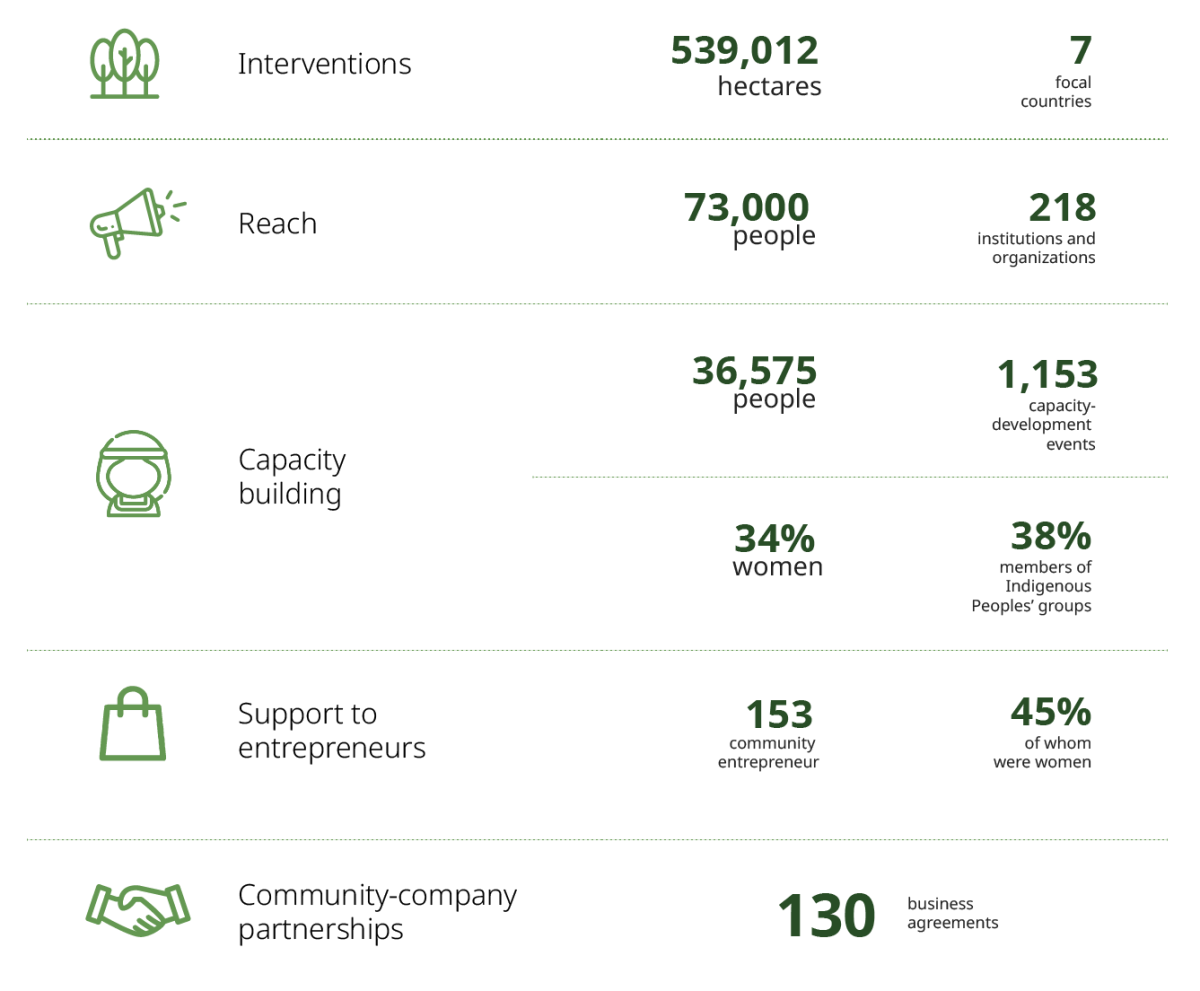

2022–2023 was an important year for us, marking a period of consolidation and of preparation. It was the final year of implementation of our 2018–2023 Strategic Plan, during which we laid the groundwork for our 2023–2028 Strategic Pan.
As a result of our effort to leverage and mobilize resources across our programs and projects, there was great synergy between our four Strategic Goals:
- Landscape collaboration in a changing climate
- Governance, institutions and conflict transformation
- Private sector engagement and enterprising communities
- Social inclusion, gender equity and public action
Together, our Strategic Goals contributed to the training of 14,335 people, influencing 28,983 individuals.
Through capacity building events, we directly enhanced the skills and knowledge of 36,575 people. The 1,153 capacity-development events organized included training, learning events, workshops, study tours and coaching or mentoring in the field. Among the trainees, around 34 percent were women and 38 percent were members of Indigenous Peoples’ groups.
Page break
Spacing

We were able to directly reach nearly 73,000 people and a range of stakeholders representing 218 institutions and organizations through 171 major events. Stakeholders included national policymakers and staff from line agencies and civil society organizations as well as researchers and practitioners, youth group members, local forest managers and users and staff of private companies.
We also supported 153 community entrepreneurs, 45 percent of whom were women, with market analysis and linkages and technical advice. We were able to facilitate 130 business agreements and partnerships between communities and private companies.
We published a comprehensive guide that provides an overview of the formal community forestry models in RECOFTC’s seven focal countries, detailing the range of community members’ rights and responsibilities. Additionally, we co-developed guiding principles to enhance social forestry legal frameworks in ASEAN. We also partnered with FAO to launch a manual for trainers from organizations that provide support to forest sector smallholders, communities, the private sector and national stakeholders in the production of timber and other forest products.
Page break
Spacing
To amplify forest science and governance findings and updates, we disseminated 355 communication products, including training and research materials, online and social media products, news stories and journal articles. This included topical, externally generated materials and stories featured in RECOFTC’s external communication channels.
Overall, our interventions were directly associated with 539,012 hectares of community forest across our seven focal countries.
Page break
